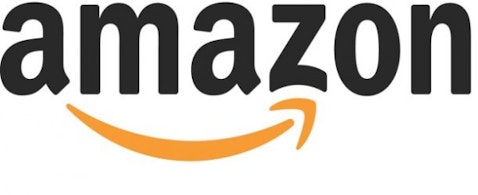Amazon.com, Inc. (NASDAQ:AMZN) is not worried about generating income through its membership fees–or is it? The company is spending millions of dollars for the purpose of providing original content. Will they generate revenue from subscriptions? Yes, but that isn’t the goal of the company. Amazon.com, Inc. (NASDAQ:AMZN)’s goal is much deeper than simply acquiring revenues from these subscriptions.
Netflix, Inc. (NASDAQ:NFLX) is often given credit for starting a new way of viewing TV shows. Hulu Plus was quick to follow, and now Amazon is giving it a shot. Amazon Prime members will pay an annual $79 and receive many “benefits,” which include free two-day shipping and several new TV shows that Amazon is producing. So, what exactly is Amazon’s goal?
Amazon’s goal
Simply put, they want to maximize revenues not from their subscriptions, but because of their subscriptions. The Huffington Post cites a recent Morningstar study that showed, “Prime members shop more frequently than non-members, spend twice as much annually and tend to buy more expensive products.” Although Amazon.com, Inc. (NASDAQ:AMZN) won’t release how many subscribers it has, Morningstar estimates 10 million Amazon Prime account holders. By 2017, that figure is expected to grow to over 25 million.
This explains why Amazon is willing to charge about $1.42/month less than either Hulu or Netflix, Inc. (NASDAQ:NFLX). Amazon.com, Inc. (NASDAQ:AMZN)’s market cap is nearly ten times that of Netflix, Inc. (NASDAQ:NFLX), but both companies have seen revenues increase annually for more than a decade. Is there still a market for these type of services? You better believe it. In fact, according to Nielson, the average household watches over eight hours of television every day.
New products?
It is believed that Amazon.com, Inc. (NASDAQ:AMZN) is working to develop a streaming box, similar to that of the Apple Inc. (NASDAQ:AAPL) TV or Roku. Now, the Apple Inc. (NASDAQ:AAPL) TV may not seem to generate much revenue stream for the company, as it accounted for less than 0.5% of Apple’s 2012 revenues. That may not seem like much, but for a company that brought in over $156.5 billion in 2012, the Apple TV accounted for approximately $720 million. If Amazon can successfully develop, release, and sell some of these streaming boxes, revenues could receive another boost.
Mixed performance
Valuation
According to Morningstar, the economic moats of these companies vary greatly. Netflix, Inc. (NASDAQ:NFLX) doesn’t have one, Apple Inc. (NASDAQ:AAPL)’s is narrow, and Amazon’s is wide. I don’t think a lot of the typical metrics apply to Amazon.com, Inc. (NASDAQ:AMZN), but I do believe that if you look at the whole picture it is fairly priced for three reasons:
– A wide economic moat
– Meaningful avenues for growth
– Margin expansion potential
Apple and Netflix show respective earnings yields of 9.3% and 0.18%. Netflix has a negative free cash flow (FCF), which will obviously lead to many unfavorable valuation metrics. After evaluating how these companies have performed and what valuations they have, I believe Netflix is a very uncertain investment.
Competition
If nothing else, this industry has started some serious competition. Netflix, Inc. (NASDAQ:NFLX) has, in my opinion, performed better than either Apple or Amazon. However, it is certainly less stable than either of these two companies. Netflix may continue to do very well, but I also believe that because of the immense competition in this area, the slightest slip up may mean a crashing stock. Diversity may be the best option for these companies. Why is it that Amazon and Apple appear to be more stable? Well, probably because they have more diversity than Netflix. They don’t have all their eggs in one basket.
The foolish bottom line
It appears that Amazon.com, Inc. (NASDAQ:AMZN) wants to be more involved in this area, but how successful will it be? If the past is any indication of the future, it will make the company far more money than they spend. Apple has never had issues generating revenues, and Netflix, Inc. (NASDAQ:NFLX) has performed better than either of its competitors. Diversification may be the key here, but then again, how can you bet against a company that has rewarded its shareholders nearly three times as much as its two other major competitors?
More than anything, it may be most important to always look at alternative motives for these companies. Although Amazon may not generate much income from its actual subscriptions, the side effects are much more noticeable. Once you buy a subscription, you are likely to be sold much more.
The article If You Buy, You’re Sold originally appeared on Fool.com and is written by Tyler Wofford.
Tyler Wofford has no position in any stocks mentioned. The Motley Fool recommends Amazon.com, Apple, and Netflix. The Motley Fool owns shares of Amazon.com, Apple, and Netflix. Tyler is a member of The Motley Fool Blog Network — entries represent the personal opinion of the blogger and are not formally edited.
Copyright © 1995 – 2013 The Motley Fool, LLC. All rights reserved. The Motley Fool has a disclosure policy.








